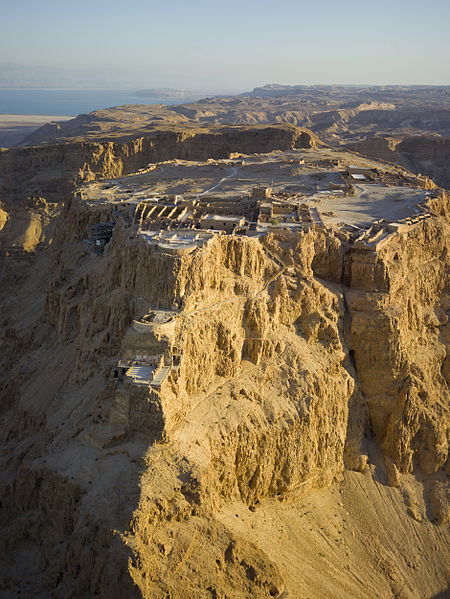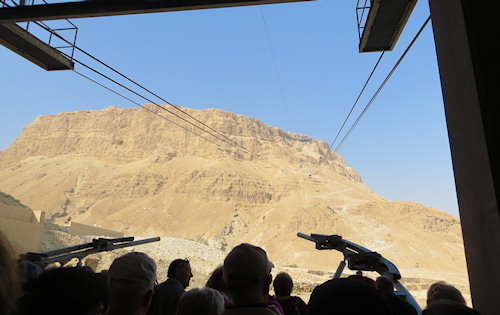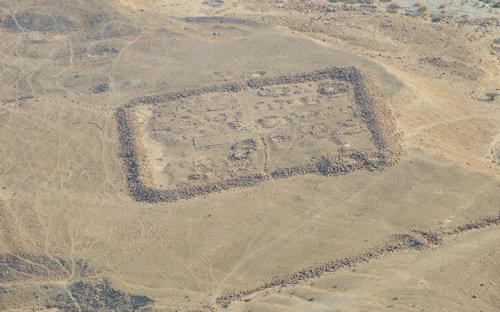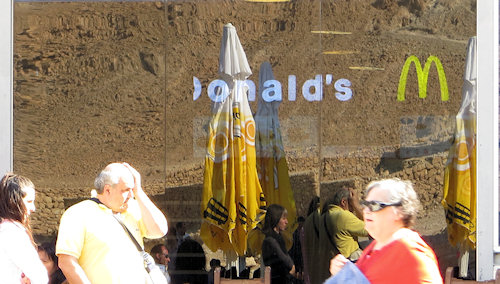
Masada is a place of legend – and a place I had always wanted to visit – and on my recent trip to Israel, I did.
It was spectacular in so many ways – it’s really hard to know where to start. There’s history and geology and tragedy and Peter O’Toole…
I guess it starts with this amazing free standing rock plateau on the edge of the Judean Desert – overlooking the Dead Sea.
It looks high – but in some ways it’s not… the top is just 33 meters above sea level … of course the base is more than 200 meters BELOW sea level… (the Dead Sea is just a stone’s throw away).
It was the obvious place to build a fortress – but it has been captured more than once – so was probably not as good a fortress as it might initially seem.

King Herod the Great built palaces there, to host great feasts and, if the tour guides are to be believed, occasionally push an enemy off the top.


Some years after Herod, Jewish rebels fleeing their Roman overlords set up on the mountaintop. The battle to remove them is the stuff of legends. The Roman governor Lucius Flavius Silva took the tenth legion to Masada to remove the Jews. It wasn’t that easy and took months, rather than the few days they predicted.

To get to the mountaintop, the Romans had to build a massive stone and dirt ramp against the western wall – then make a huge siege tower which was pushed/hauled up that ramp to breach the walls.

According to history (or legend), when the Romans entered Masada – all the defenders and their families had committed suicide rather than become slaves to the Romans.

Archaeologists do dispute some of the ‘facts’ of the siege of Masada… but it adds a great atmosphere to the ruins. At one point our guide insisted we were standing at the very place where the last Jewish defender killed himself…
Maybe… maybe not. But the ruins of Masada have a special poignancy – although coming back down of the mountain does bring one back to earth with a thud.

